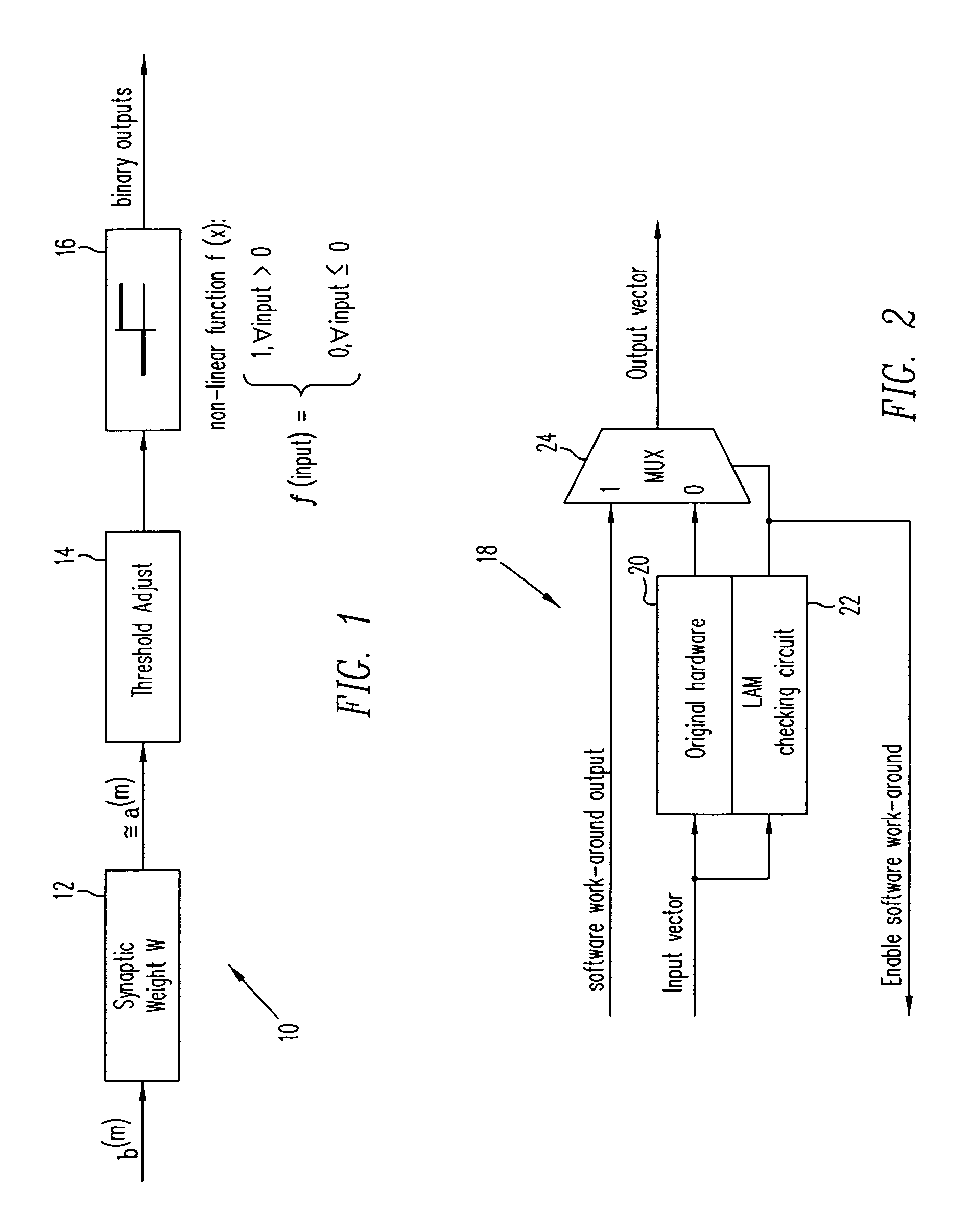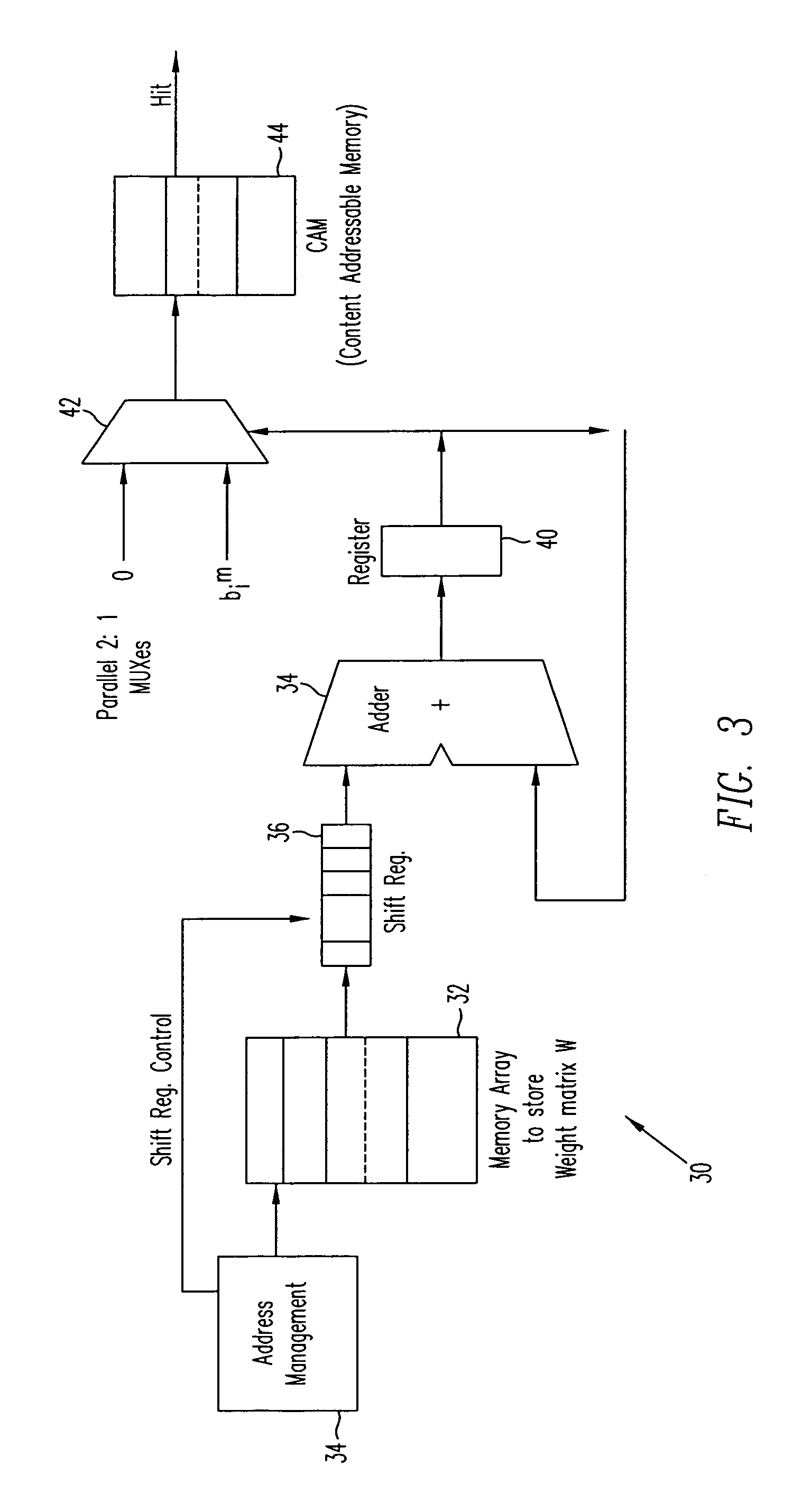Linear associative memory-based hardware architecture for fault tolerant ASIC/FPGA work-around
a hardware architecture and associative memory technology, applied in the field of electronic circuits, can solve the problems of inability to guarantee 100% coverage, most time-consuming and complicated approaches, and fpga is usually larger and more complex than a pld
- Summary
- Abstract
- Description
- Claims
- Application Information
AI Technical Summary
Benefits of technology
Problems solved by technology
Method used
Image
Examples
Embodiment Construction
)
[0029]The present invention is directed to a method of providing fault-tolerance in a programmable logic circuit, such as an application-specific integrated circuit (ASIC) or field-programmable gate array (FPGA), by utilizing an efficient software work-around for faulty hardware in the programmable logic circuit. The hardware architecture envisioned by the invention allows for certain input vectors to be handled by the original hardware design while only faulty cases trigger the software work-around. In the preferred embodiment, this architecture is derived from a feedforward linear auto-associative memory neural network as discussed further below.
[0030]A generalized artificial neural network (ANN) with a feedforward linear associative memory (LAM) model has one layer of input neurons and one layer of output neurons, with a feedforward weight connection. A background discussion of this type of ANN can be found in the book “Digital Neural Networks,” by S. Y. Kung (1993). Feedforward...
PUM
 Login to View More
Login to View More Abstract
Description
Claims
Application Information
 Login to View More
Login to View More - R&D
- Intellectual Property
- Life Sciences
- Materials
- Tech Scout
- Unparalleled Data Quality
- Higher Quality Content
- 60% Fewer Hallucinations
Browse by: Latest US Patents, China's latest patents, Technical Efficacy Thesaurus, Application Domain, Technology Topic, Popular Technical Reports.
© 2025 PatSnap. All rights reserved.Legal|Privacy policy|Modern Slavery Act Transparency Statement|Sitemap|About US| Contact US: help@patsnap.com



